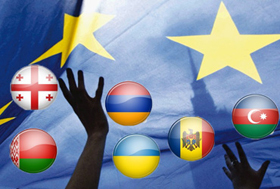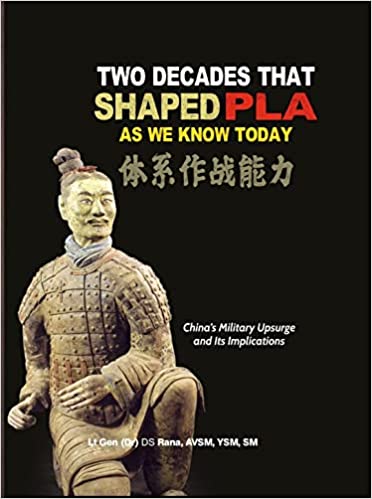At the start of the 21st century, the post-Soviet states found themselves in a new geopolitical situation. The expansion of the EU from 2004-2007 brought its borders right up to the republics of the former USSR, which has raised their importance for Brussels. Russia has left the crisis mode of the 1990s behind and is asserting its growing international role, primarily in the post-Soviet space. As a result, the ex-USSR republics (except for the Baltic states) have become a zone of intersecting interests between two major actors, Russia and the European Union, and need to build relations with each of them. Both Russia and the EU regard the post-Soviet states as foreign policy entities with no agenda of their own that must choose a pattern of cooperation that is offered from by external actors.
Russian and European Integration Projects in the Post-Soviet Space
Seeing the former USSR as a region in transformation, the European Union is eager to make a historic contribution in this process. In practical terms, this means that changes should match both EU visions and interests promoted by Brussels through several joint programs and numerous target projects.
The European Neighborhood Policy of 2003-2004 suggested “sharing everything but institutions”, which meant large-scale cooperation on certain conditions with no prospect for joining the union. Later, in 2007, the EU was pushed by Germany to announce the so-called Neighborhood Policy Plus and the European Strategy for Central Asia. In 2008-2009, Europeans put forward its Eastern Partnership program for six states, i.e. Belarus, Ukraine, Moldova, Georgia, Armenia and Azerbaijan. All European initiatives help formalize political conditionality, appeals to development of political dialog, democratization and assistance to reforms.
On the one hand, Brussels is attempting to implement a values-oriented cooperation policy, yet on the other, it is seeking to ensure its economic and geopolitical interests in the region. The result is recurrent conflicts of values and interests seen most vividly in relations with Central Asian countries and Azerbaijan, the oil and gas suppliers. Unquestionably interested in closer energy cooperation with them in order to diversify deliveries and lower dependence on Russia, the EU does not emphasize its traditional demands for democracy and human rights. Hence, political conditionality gives way to economic and geopolitical interests.
In the past, Russia initiated and maintained a multiplicity of cooperation formats in the post-Soviet space, which gave rise to certain dichotomy of interests. But in recent years, Moscow has stepped up its integration efforts and presented clear-cut cooperation priorities. The Eurasian Economic Community platform was used to establish the Customs Union (CU) of Russia, Belarus and Kazakhstan; the creation of the Common Economic Space (CES) is underway; the creation of a supranational Eurasian Economic Commission is in progress; and plans for establishment of the Eurasian Economic Union are in the making. These projects are open for interested countries who meet certain conditions, while issues related to democracy issues are not critical for membership. Taking into account existing economic ties, Eurasian integration is likely to attract the post-Soviet countries. At the same time, it will mandate full-fledged participation in integration projects, giving rise to problem (already existent in the EU) of the states’ desire and capacity to take part. Members of the Customs Union would like to take in the economically developed Ukraine, while the current aspirants are Kyrgyzstan and Tajikistan, both of whom fail to fully meet the preconditions. Currently, Russia and its CU-CES partners see their key task as raising the efficiency of their association in order to generate real economic profits for the participants and increase its attractiveness for states wanted by the CU.
Thus, the post-Soviet countries have been offered a choice of cooperation models or, actually, models for development. This statement mostly refers to the six states of the Eastern Partnership, since Central Asia is geopolitically specific and cannot fully work towards the European Union.
Is Competition a Reality?
Formally, participation in one integration project should not exclude engagement with another. But the extreme politicization in discussions about the development of post-Soviet countries, the differences between them, back-and-forth criticisms between Russia and the EU, and divergent requirements for integration participants make the EU and CU-CES activities in the ex-USSR perceived as competing initiatives.
But is there really competition? The answer seems ambiguous.
First, the EU and the CU offer the post-Soviet states two very different futures. The CU-CES positions itself as an open association ready to admit new members willing to be in and meeting certain requirements, while the EU offerings fail to provide membership, even in the medium run and even if they satisfy the required conditions. On the contrary, both the Neighborhood Policy and the Eastern Partnership have been developed as an alternative to EU membership (and not without reason, the Neighborhood Policy does not apply to the Western Balkan countries).
Second, all EU program documents support the development of regional integration and expanded cooperation with integration groups. Theoretically, the amalgamation in the post-Soviet space should not fall out of line. Although the European establishment tends to cold-shoulder the Eurasian integration process, it is becoming an objective factor in relations between the European Union and post-Soviet states. According to Russian Ambassador to the EU Vladimir Chizhov, the partial reassignment of national powers, primarily in trade and the economy, to the supranational Eurasian Economic Commission forces the EU to reckon with the integrated association in the post-Soviet space and build relations with it.
Third, competition really only affects two or three countries of interest for both the EU and Russia, which for certain reasons cannot clearly define their positions. At the same time, all post-Soviet states one way or another use their ties with the EU as a lever in relations with Russia to reach their aims in the bilateral format. As for Russia, it keeps overreacting within this scenario, especially as the EU usually increases its advances toward the post-Soviet states when its dialogue with Russia goes sour.
Neighborhood Policy, Eastern Partnership and Interests of Russia
When the European Neighborhood Policy (ENP) was launched, Russia refused to participate because the EU de facto regards its neighbors as policy entities that are meant to accept a certain set of values and carry out prescribed reforms. The unilateral EU program is definitely unacceptable for Russia, which however does not suggest a rejection of reforms or alignment of legislations, except on a voluntary basis and taking into account national interests. Therefore, the Russia-EU relationship has taken on a bilateral pattern geared at establishing a partnership.
As a whole, the European Neighborhood Policy went wrong mostly because it did not account for the neighbors' specificities, i.e. the same approach was applied both to the post-Soviet and Mediterranean states. Therefore, the ENP practically fell apart into the Eastern Partnership and the Union for the Mediterranean.
Formalized in 2008-2009, the Eastern Partnership was rebuffed by the Russian establishment, which was no surprise keeping in mind Russia's thorny relations with Poland and Lithuania, the ENP’s initiators, and the consequences of the Russia-Georgia war. The program is not bluntly anti-Russian, providing for Moscow's participation in certain projects on the partnership basis [1]. Nevertheless, the Eastern Partnership is a soft-power attempt to have post-Soviet participants engaged in the EU orbit. The process primarily employs the harmonization of those countries' legislations with EU law, introduction of EU technical standards, and an attempt to implant European values in the post-Soviet space that is still in transition. Some analysts have labeled Eastern Partnership a modernization project [2], but the program clearly has shown the desire to channel a transformation toward the European Union's interests and aspirations.
The program's deficiencies are obvious: its unilateral orientation, an undersized budget, the prevailing bilateral relations of the EU with each of the six states over the common approach with the Eastern Partnership, and application within an amalgamation of states with diverse political setups and differing aspirations toward the European Union. Hence, no major collective breakthrough seems likely, while a deeper EU relationship with one of these countries is more likely, for example with Ukraine which may boast the most advanced format of interaction with the European Union. At the same time, Brussels is compensating for its current deficit of political promises within the Eastern Partnership with a broad set of cooperation tools, including liberalizations of visa regimes and the prospect of establishing a free trade zone with the EU. Notably, the European Commission's logic suggests that the Eastern Partnership countries might obtain a visa-free regime before Russia does, although the harmonization of their legislations with EU norms and rules are likely to complicate fulfillment of their effective obligations within the integration projects in the post-Soviet space. Hypothetically, conflicts may emerge in Belarus if the opposition comes to power or Armenia and Ukraine if they wish to join the Customs Union.
As for Russia, it should profit from closely watching the Eastern Partnership projects and possibly participating in them, including developing civil society contacts. This approach will seemingly curb anti-Russian sentiments within the program and stimulate a multilateral format for its advancement.
Eurasian integration is changing the configuration of the Russia-EU relationship, making it markedly more sophisticated. Whereas now the dialog is aligned towards Russia – EU members and Moscow-Brussels, now additional tiers emerge, i.e. EU – Customs Union and Eurasian Economic Commission and EU members – Customs Union.
A negative scenario for relations between the European Union and CU-CES could be the absence of cooperation and tough competition over influence in the post-Soviet space, followed by the obligatory choice of a rival project for countries of the region. The prospect is to definitely obstruct a positive relationship between the interested sides. An alternative is likely to be found in a WTO-based broad free trade zone uniting the EU and integrating Eurasian states.
1. For details on the Eastern Partnership and its activities see: O.Arutyunyan, A.Sergunin. Eastern Partnership: the Second Wind // Observer 1/2012. Pp. 90-97; I.Bolgova. Eastern Partnership: European Union in Search of a New Foreign Policy Identity // European Union in the 21st Century: the Trial Period / Ed. By O.Yu.Potyomkina (editor-in-charge), N.Yu.Kaveshnikov, N.B.Kondtratyeva. Moscow: Ves' Mir Publishers, 2012. Pp. 380-397.
2. Makarychev A., Deviatkov A. Eastern Partnership: Still a missing link in EU strategy? / CEPS, 2102. (http://www.ceps.eu/book/eastern-partnership-still-missing-link-eu-strategy)







